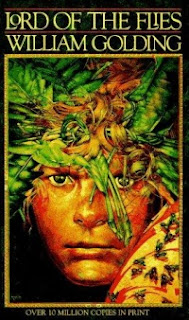WORD CHOICE
If you examine the first pages of Raisin in the Sun, namely the dedication and the epigraph, you'll see where it's title came from. (Or, if you're a stickler for good grammar, from where its title comes.)
The poem Harlem by Langston Hughes asks a profound question about dreams, encouraging the reader to contemplate what happens not just when a dream is not realized, but when a dream is deferred.
As you read A Raisin in the Sun by Lorraine Hansberry, keep this word choice in mind. Is deferred the best word simply because of the alliteration, or is there another reason Hughes chose it?
- What does it mean to defer?
- What does it mean for a dream to be deferred?
- How would the meaning or tone of the poem change if Hughes had asked instead, "What happens when a dream doesn't come true?" or "when a dream dies?"
We'll also check in on the assignments below, so please choose one to tackle and come prepared to discuss your thoughts, show your work, or defer your dreams, whichever is most appropriate.
ASSIGNMENT OPTIONS
Option #1: Dream CollageWhat are your dreams? Not the ones you have at night while you're asleep—the ones you think about during the day. Such as... what you plan to do after high school or college, what you hope to do for your life's work, where you want to live, what kind of house, car, or lifestyle you hope to have, whether or not you want a family. That stuff. Come up with at least one dream you have for you future and create a collage (or go ahead and sketch, draw, or paint) to illustrate it pictures and words. Bring your collage with you and be prepared to pass it around and talk about it a little bit.
Option #2: Dream Essay, Poem, or Song
See #1 above, but instead of creating a collage, write an essay, poem, or song about your dream—what it is, why it is important to you, and when (or how) you hope to make it happen.
Option #3: Raisin Dreams
What do raisins dream about? Actually, forget that. Instead, take some time to consider the depiction of dreams in the play and answer the questions below—in writing, in an essay, with bullet points, with pictures. Whatever works. Creativity is always encouraged. Ready? Here you go:
Those are your choices, although you are always free to come up with something of your own. See a symbol or theme you want to explore further, write about, depict in an artistic creation of your choosing? Go for it.
Whatever you do, be ready to share it on Wednesday. Until then, happy reading.
See #1 above, but instead of creating a collage, write an essay, poem, or song about your dream—what it is, why it is important to you, and when (or how) you hope to make it happen.
Option #3: Raisin Dreams
What do raisins dream about? Actually, forget that. Instead, take some time to consider the depiction of dreams in the play and answer the questions below—in writing, in an essay, with bullet points, with pictures. Whatever works. Creativity is always encouraged. Ready? Here you go:
- Why do you think Lorraine Hansberry took the title of her play from this poem?
- Which characters in A Raisin in the Sun have their dreams deferred? Explain.
- What would it be like to work toward a goal but never actually accomplish it?
- Which of Hughes' similes do you think is most accurate? Would a "dream deferred" be more likely to dry up, fester, or explode? Why?
- Finally, do any of the characters' experiences suggest one simile more than another? Explain.
In A Raisin in the Sun, incredible sacrifices are made for the benefit of the family. Some family members are more willing to shoulder sacrifice than others, however, which leads to conflict. Accepting sacrifice for the benefit of the family is a recurring theme throughout the play, culminating in its final scene. So... riddle us this:
- Who sacrifices the most in A Raisin in the Sun?
- Is sacrifice seen as a positive, admirable attribute? Why? By whom?
- What are people willing to sacrifice? What aren’t people willing to sacrifice?
Those are your choices, although you are always free to come up with something of your own. See a symbol or theme you want to explore further, write about, depict in an artistic creation of your choosing? Go for it.
Whatever you do, be ready to share it on Wednesday. Until then, happy reading.














.png)